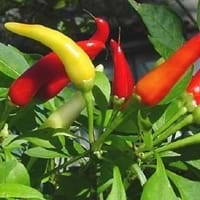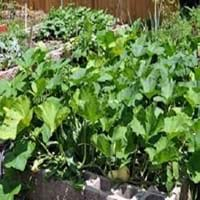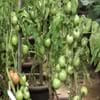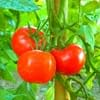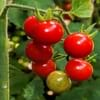Origin
Mexico, Central America, South America
North America, Mexico, Central America, South America
Types
Not Available
Neck, Really Big Hybrid, Waltham
Habitat
Open areas
Cultivated Beds
USDA Hardiness Zone
Not Available
9-11
Sunset Zone
A1, A2, A3, H1, H2, 1a, 1b, 2a, 2b, 3a, 3b, 4, 5, 6, 7, 8, 9, 10, 11, 12, 13, 14, 15, 16, 17, 18, 19, 20, 21, 22, 23, 24
A1, A2, A3, H1, H2, 1a, 1b, 2a, 2b, 3a, 3b, 4, 5, 6, 7, 8, 9, 10, 11, 12, 13, 14, 15, 16, 17, 18, 19, 20, 21, 22, 23, 24
Habit
Upright/Erect
Prostrate/Trailing
Flower Color
White, Light Yellow, Ivory
Yellow, Gold
Flower Color Modifier
Bicolor
Bicolor
Fruit Color
Red, Green, Dark Green
Peach, Tan
Leaf Color in Spring
Green
Green, Dark Green
Leaf Color in Summer
Dark Green
Green, Dark Green
Leaf Color in Fall
Dark Green, Black
Green, Dark Green, Yellow green
Leaf Color in Winter
Dark Green
Not Available
Leaf Shape
Elliptic
Heart-shaped
Plant Season
Spring, Summer, Fall
Summer, Fall
Sunlight
Full Sun
Full Sun
Growth Rate
Medium
Very Fast
The pH of Soil
Neutral
Neutral
Soil Drainage
Well drained
Well drained
Bloom Time
Indeterminate
Early Summer, Summer, Indeterminate
Tolerances
Drought
Drought
Where to Plant?
Container, Ground, Pot
Container, Ground, Pot
How to Plant?
Seedlings, Transplanting
Seedlings
Plant Maintenance
Medium
Medium
Watering Requirements
Do Not over Water
Average Water Needs
In Summer
Lots of watering
Lots of watering
In Spring
Moderate
Moderate
In Winter
Average Water
Average Water
Soil Drainage Capacity
Well drained
Well drained
Sun Exposure
Full Sun
Full Sun
Pruning
Remove damaged leaves, Remove dead branches, Remove dead leaves
Remove damaged leaves, Remove dead branches, Remove dead leaves, Remove dead or diseased plant parts
Fertilizers
All-Purpose Liquid Fertilizer
Apply 10-10-10 amount, Apply 12-12-12 amounts, Nitrogen, Phosphate, Potassium
Pests and Diseases
fungus, Verticillium Wilt, Viruses
Red blotch
Plant Tolerance
Drought
Drought
Flowers
Insignificant
Showy
Flower Petal Number
Single
Single
Foliage Texture
Medium
Coarse
Foliage Sheen
Glossy
Matte
Attracts
Not Available
Ants, Bees
Allergy
Hives, Rash
Dermatitis
Aesthetic Uses
Showy Purposes
Not Used For Aesthetic Purpose
Beauty Benefits
Not Available
Glowing Skin, Good for skin and hair
Environmental Uses
Air purification
Air purification
Medicinal Uses
Diphtheria, Gout, Malignant Scarlet Fever, Paralysis
Antiasthamatic, anti-cancer, anti-inflammatory, Cardiovascular problems, cholesterol-lowering, constipation, Diabetes, Fiber, High blood pressure, Immunity, Manganese, Rich in Potassium, Vitamin A, Vitamin C, Vitamin E
Part of Plant Used
Fruits
Flowers, Fruits, Leaves, Seeds
Other Uses
Used As Food
For making oil, Used As Food
Used As Indoor Plant
No
Yes
Used As Outdoor Plant
Yes
Yes
Garden Design
Container, Edible, Herb / Vegetable, Tropical
Edible, Herb / Vegetable, Vine
Botanical Name
CAPSICUM annuum 'Serrano'( Longum Group)
CUCURBITA moschata 'Quantum'
Common Name
Hot Chili Pepper, Serrano Pepper
Butternut Squash
In Hindi
Serrano Kali Mirch
Butternut Squash Plant
In German
Serrano Pfeffer
Butternut Squash-Anlage
In French
Piment serrano
Courge musquée Plante
In Spanish
Chile serrano
Planta de la calabaza de Butternut
In Greek
Serrano pepper
Κολοκύθια Φυτών
In Portuguese
Serrano pimenta
Butternut Squash planta
In Polish
Serrano pieprz
Piżmowa roślin
In Latin
Serrano piperis
Planta butternut cucurbitae
Phylum
Anthophyta
Magnoliophyta
Class
Not Available
Magnoliopsida
Family
Solanaceae
Cucurbitaceae
Clade
Asterids, Eudicots
Angiosperms, Eudicots, Rosids
Tribe
Capsiceae
Not Available
Subfamily
Solanoideae
Papilionoideae
Season and Care of Serrano Pepper and Butternut Squash
Season and care of Serrano Pepper and Butternut Squash is important to know. While considering everything about Serrano Pepper and Butternut Squash Care, growing season is an essential factor. Serrano Pepper season is Spring, Summer and Fall and Butternut Squash season is Spring, Summer and Fall. The type of soil for Serrano Pepper is Loam and for Butternut Squash is Loam while the PH of soil for Serrano Pepper is Neutral and for Butternut Squash is Neutral.
Serrano Pepper and Butternut Squash Physical Information
Serrano Pepper and Butternut Squash physical information is very important for comparison. Serrano Pepper height is 60.00 cm and width 45.70 cm whereas Butternut Squash height is 7.62 cm and width 50.80 cm. The color specification of Serrano Pepper and Butternut Squash are as follows:
Serrano Pepper flower color: White, Light Yellow and Ivory
Serrano Pepper leaf color: Green
Butternut Squash flower color: Yellow and Gold
- Butternut Squash leaf color: Green, Dark Green
Care of Serrano Pepper and Butternut Squash
Care of Serrano Pepper and Butternut Squash include pruning, fertilizers, watering etc. Serrano Pepper pruning is done Remove damaged leaves, Remove dead branches and Remove dead leaves and Butternut Squash pruning is done Remove damaged leaves, Remove dead branches, Remove dead leaves and Remove dead or diseased plant parts. In summer Serrano Pepper needs Lots of watering and in winter, it needs Average Water. Whereas, in summer Butternut Squash needs Lots of watering and in winter, it needs Average Water.
